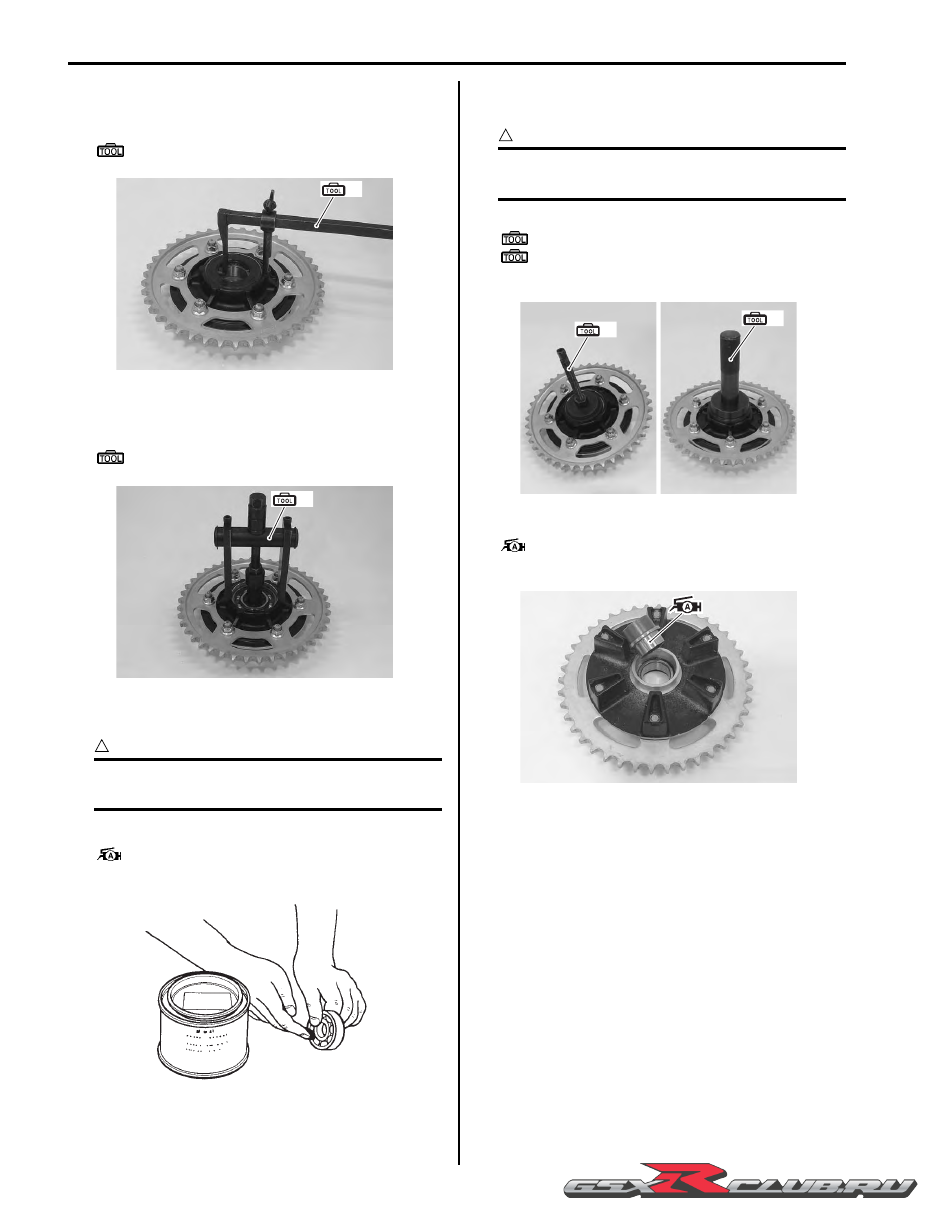Suzuki GSX-R1000. Service Manual - part 31

3A-6 Drive Chain / Drive Train / Drive Shaft:
4) Remove the sprocket mounting drum dust seal with
the special tool.
Special tool
(A): 09913–50121 (Oil seal remover)
5) Remove the sprocket mounting drum bearing with
the special tool.
Special tool
(B): 09921–20240 (Bearing remover set)
Installation
CAUTION
!
The removed dust seal and bearing must be
replaced with new ones.
1) Apply grease to the bearing before installing.
: Grease 99000–25010 (SUZUKI SUPER
GREASE “A” or equivalent)
2) Install the bearing and dust seal to the sprocket
mounting drum with the special tools.
CAUTION
!
The sealed cover of the bearing must face
wheel hub side.
Special tool
(A): 09924–84510 (Bearing installer set)
(B): 09913–70210 (Bearing installing set (10
– 75
Φ
))
3) Apply grease to the retainer.
: Grease 99000–25010 (SUZUKI SUPER
GREASE “A” or equivalent)
4) Install the rear sprocket mounting drum assembly to
rear wheel hub. Refer to “Rear Sprocket / Rear
Sprocket Mounting Drum Removal and Installation”
(Page 3A-3).
5) Install the rear wheel assembly. Refer to “Rear
Wheel Assembly Removal and Installation” in
Section 2D (Page 2D-11).
(A)
I947H1310014-01
(B)
I947H1310015-01
I649G1310020-02
(A)
(B)
I947H1310016-01
I947H1310017-01